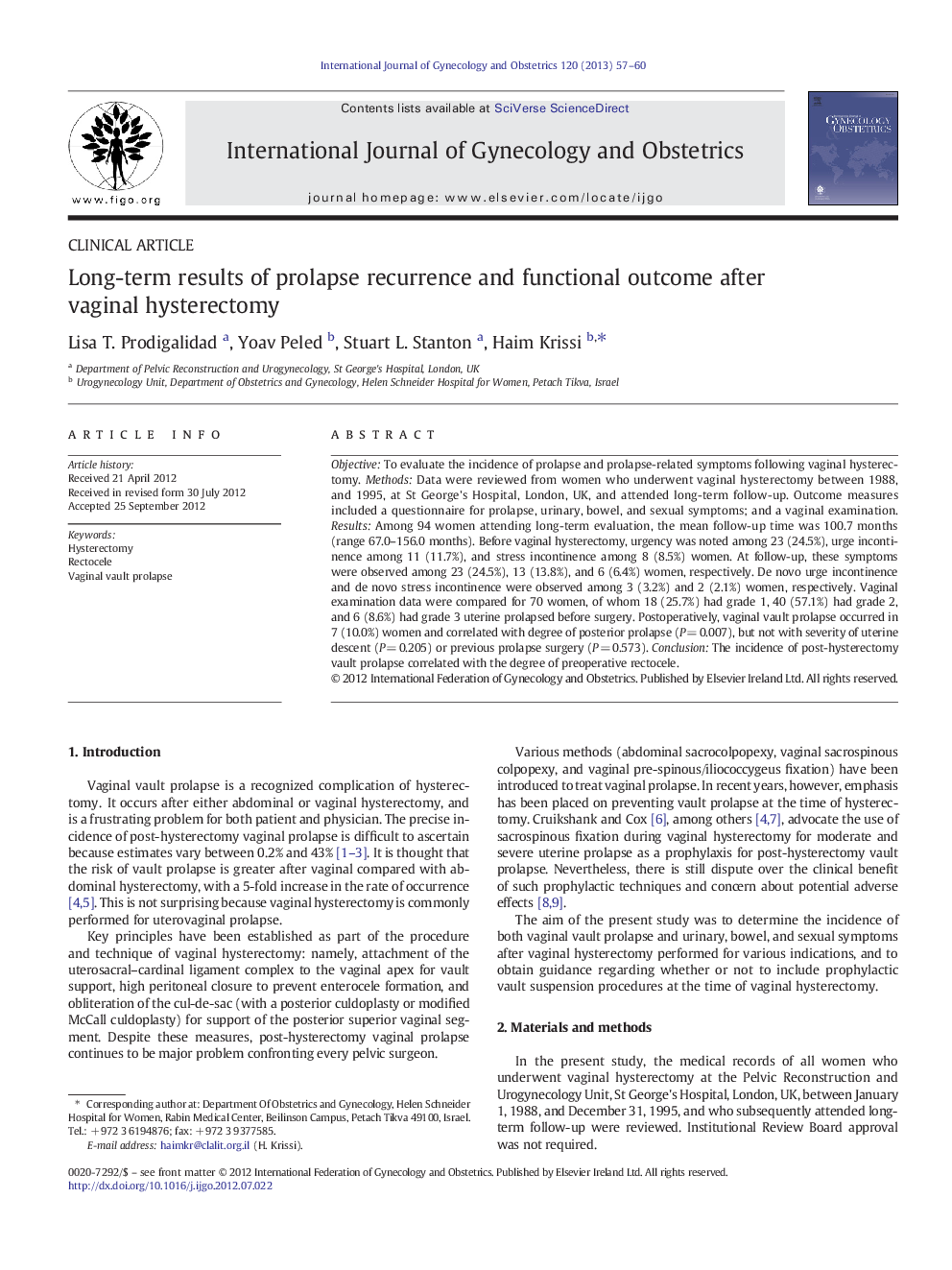| Article ID | Journal | Published Year | Pages | File Type |
|---|---|---|---|---|
| 3953273 | International Journal of Gynecology & Obstetrics | 2013 | 4 Pages |
ObjectiveTo evaluate the incidence of prolapse and prolapse-related symptoms following vaginal hysterectomy.MethodsData were reviewed from women who underwent vaginal hysterectomy between 1988, and 1995, at St George's Hospital, London, UK, and attended long-term follow-up. Outcome measures included a questionnaire for prolapse, urinary, bowel, and sexual symptoms; and a vaginal examination.ResultsAmong 94 women attending long-term evaluation, the mean follow-up time was 100.7 months (range 67.0–156.0 months). Before vaginal hysterectomy, urgency was noted among 23 (24.5%), urge incontinence among 11 (11.7%), and stress incontinence among 8 (8.5%) women. At follow-up, these symptoms were observed among 23 (24.5%), 13 (13.8%), and 6 (6.4%) women, respectively. De novo urge incontinence and de novo stress incontinence were observed among 3 (3.2%) and 2 (2.1%) women, respectively. Vaginal examination data were compared for 70 women, of whom 18 (25.7%) had grade 1, 40 (57.1%) had grade 2, and 6 (8.6%) had grade 3 uterine prolapsed before surgery. Postoperatively, vaginal vault prolapse occurred in 7 (10.0%) women and correlated with degree of posterior prolapse (P = 0.007), but not with severity of uterine descent (P = 0.205) or previous prolapse surgery (P = 0.573).ConclusionThe incidence of post-hysterectomy vault prolapse correlated with the degree of preoperative rectocele.
